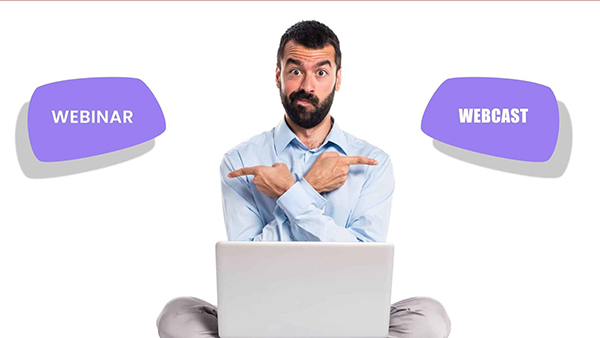How to plan a Successful Webinar – the best practices
There are many reasons that webinars are becoming more and more popular nowadays. Even before the Covid-19, marketers and comms professionals have been using webinars to reach the audience. Because of the current pandemic, the use of webinars became a necessity. Therefore, it is important to know how to plan one that is successful.
These are a few tips and best practices to get you started.
Choose a strategic Date, Time and Duration
Data suggests that people tend to participate in webinars held on a Wednesday or Thursday much more than the other days in a week. Moreover, the best time for a webinar falls between 11 AM to 6 PM as per the statistics. Obviously, there are other factors that you should consider based on the type of webinar that you are hosting and the audience that you are reaching out to.
Marketers and communication professionals agree that the optimum duration for a webinar is between 1 to 2 hours. This is for a typical event with 1 or 2 speakers. You will definitely want to have a longer duration for the larger events.
You should also plan at least 3 weeks ahead of your event. Some will plan months ahead for a 1-hour event to avoid any last minute rushes.
Set the format of the webinar
You need to consider the format of the webinar based on below technical setup.
- Is it an onsite webinar where your speakers are located at a venue/studio?
- Is it a virtual webinar where your speakers will connect from their offices or homes?
- Is it a hybrid webinar where you have an onsite team and speakers as well as virtual presenters?
Based on the above, you need to decide if you are opening the Q&A session, to let the virtual audience see each other’s presence or not, whether to publish the questions for everyone to see, who to screen the incoming questions before reaching the speakers and so on. At the same time set the programme rundown and share it with all the stakeholders.
This way, you’ll know what the actual event will be like and also the audience will have better understanding of what to expect from it.
Use the right webinar platform
There are literally hundreds of webinar or video conferencing platforms available today. It is important to know their strengths and weaknesses and utilize them according to your need.
Zoom
For instance, Zoom provides an excellent video conferencing platform that also has a webinar function. Although it is the same Zoom platform there are a few differences between Zoom Meeting and Zoom Webinar. Despite the obvious difference (meeting vs webinar), you need to choose the right one for your particular event as Zoom Meeting might still be more suitable for your event too.
Microsoft Teams
Microsoft Teams is also a powerful tool to host webinars. As a matter of fact, there is a great chance that your organization is already using Microsoft Teams for internal communications. Microsoft Teams has a great feature called “Live Event” which is suitable for webinar purposes.
Webex
Another tool that is widely used is Webex from Cisco. Likewise, Webex also has a meeting application as well as a webinar application called Webex Event.
BlueJeans, Livestorm, Hopin, the list of platforms goes on and on. It is important that you know each of their advantages and disadvantages so you can choose the right platform for you.
Rehearsal and Practice
You should test, practice, and rehearse with the whole team at least once before the actual event. You should perform the following to ensure a smooth event experience.
- Speaker Connectivity Test and Briefing: to ensure the virtual speaker’s connection is good enough, and his/her devices are functioning properly.
- Moderator Connectivity Test and Briefing: to ensure the moderator knows the way around the platform as the moderator might be handling Q&A function etc.
- Onsite Connection Test: for onsite or hybrid events, you should test the available internet bandwidth for both primary and secondary (backup) connections.
- Do a mockup webinar with the audience: lastly, it is also beneficial to actually broadcast the webinar with some internal audience to check all the functions provided by the platform is working.
On the actual event day, request the speakers to connect at least 15 minutes in advance (virtual speaker) to go through final checks.
Finalize the webinar materials on time
Presentation slides, planned Q&A content, graphic designs & artworks, music and videos (if any), promo codes, QR codes, etc.., should be ready days before the actual event’s day. Speakers and other members should avoid making last-minute changes as well.
Materials being not ready and having many last-minute changes would affect negatively on the event.
Prepare for the post-webinar reports
Most likely, you would definitely like to have rich analytics of the event once it is finished. Depending on the platform, while some data and analytics are automatically recorded, some needs to be manually turned on. It is often easy to overlook such little details and end up missing crucial data. Therefore it is important to make a list of the data and analytics that you need and set up the platform accordingly.
There we have it!
Although there are so many things to consider while planning a webinar, we hope the above tips can help you organize one smoothly.
Connect Vision is a team of experts in virtual meeting and event platforms with years of experience. If you need professional support for your events, reach out to us for a free consultation and a quotation.


